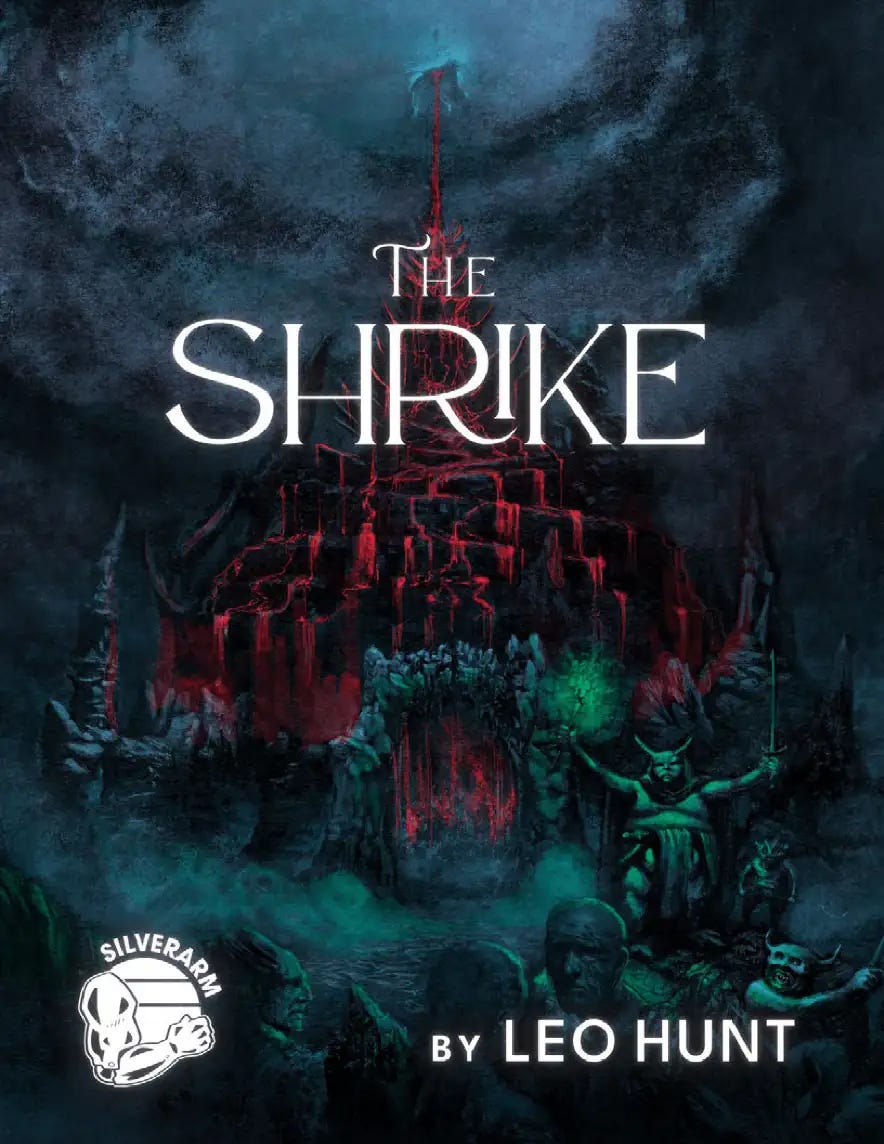The Trick to Making Memorable RPG Settings
And a look at Wulfwald
This week on Questing Beast I take a look at Wulfwald, a new OSR box-set setting where players take on the role of a squad of outlaws working for a local Thegn in an Anglo-Saxon inspired world. It even includes a huge, beautiful map by the late Russ Nicholson. The whole product feels like something that could have existed in the 1970s if OD&D had been more oriented towards history than fantasy.
The best RPG settings and adventures incorporate strong, memorable visuals. Obviously, that’s not the only thing that they need. Great adventures should also include high levels of interactivity, encounter variety, powder, kegs, etc. But if you really want to stand out you want a concept and a visual that grabs the reader’s imagination. Not only does it look great on a cover, it makes the adventure stickier and therefore more likely to be shared and played.
Reading the most recent issue of Vaults of Vaarn (review here) was what got me thinking about this. It’s a great science fantasy setting that incorporates many of my favorite tropes, like a dying sun, technology as magic, and deep levels of buried civilizations, but it’s also designed with simple yet arresting images.
Number one is the blue sands. Desert settings are always great for an aura of mystery and danger, but having the dune sea be a brilliant blue color was a smart choice. It’s a small change that immediately communicates the weirdness of the setting and implies a whole lot else about the world. What is the sand actually made of? If it isn’t normal sand, how much time must have gone by for it to accumulate?
The sand is also everywhere, so it serves as a great hallmark of the world. If the party is transported through a portal and finds themselves in a blue dune sea, there’s only one place they could possibly be. I’m not saying that every adventure or setting has to have something like this, but it certainly helps in communicating the world’s aesthetic and grabbing people’s attention.
Ideally, these core images don't just communicate the theme and tone of your world, they add something gameable to it as well. Issue four of Vaults of Vaarn takes place inside the Wall, a miles-high megastructure that stretches across the desert. Like the blue sands, it implies a lot of interesting things about the world, but it also pitches you on a new type of gameplay, one where you can explore vertically as well as horizontally.
How does travel work? How does civilization survive inside a wall? What ecologies would adapt to that? What does combat look like? These sorts of questions present themselves right away, and get players excited about playing in a very different environment with new types of challenges. And all you needed was that single concept.
Leo Hunt, the author of Vaults of Vaarn, seems to be quite good at this. The other adventure of his that I looked at, The Shrike (review here), is set on a tall, needle-like island emerging from a stormy sea. Already that’s a great image, but then he adds the body of a dead god impaled upon its peak with its blood running down the sides of the mountain, and now you have something special. Players are going to want to investigate even if they know nothing else about it.
Now, let’s compare this to the official D&D settings.
Keep reading with a 7-day free trial
Subscribe to The Glatisant: A Questing Beast Newsletter to keep reading this post and get 7 days of free access to the full post archives.


